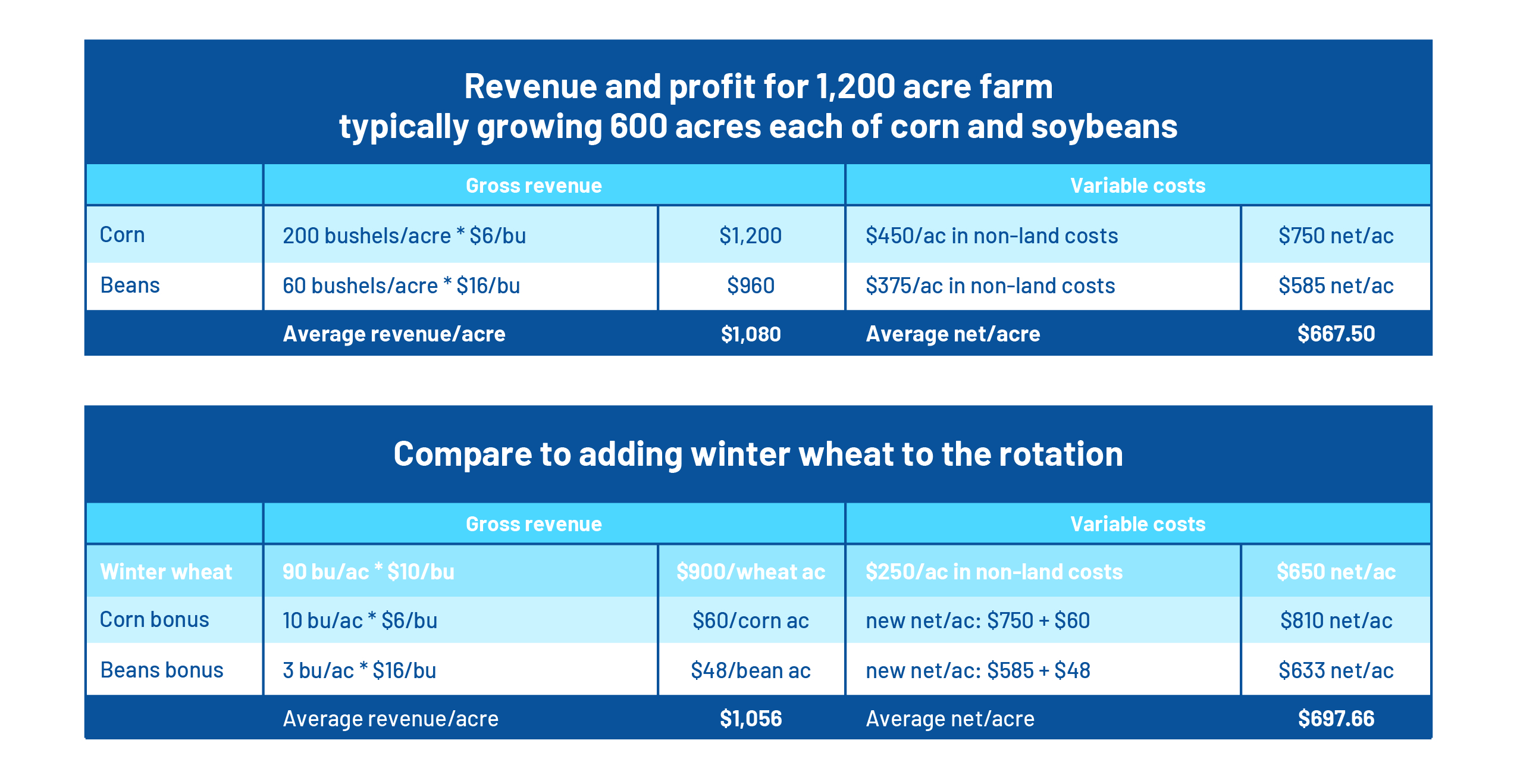How does adding a small grain to the rotation impact corn and soybean yield and profitability
ARTICLE SUMMARY: Diversifying crop rotation by adding a small grain benefits yield and profitability. Learn how much this change can positively impact your operation.
Many growers play with the idea of adding a small grain to their corn-soybean rotation, but when they compare the typical revenue of wheat or oats against corn or soybeans, most choose to keep their simple two-crop rotation. Those growers miss a major factor when considering adding small grains to the rotation—free bushels of corn and soybeans.
Five percent. That’s the typical corn and soy yield boost that most studies on the topic show can result by adding a small grain to a corn-soybeans rotation. So on average, that means three more bushels of soybeans and around ten more bushels of corn per acre. When we calculate that value and attribute it to the small grains we see an even better return, especially when we consider costs per acre.

So when considering the bonus bushels, adding a small grain to a corn-soybean rotation improves profit/acre by over $30/acre.
The story doesn’t end there, though. There are operational and agronomic impacts to adding a third crop. Growers who add a small grain report lower equipment and hired labor costs, as they are able to spread out planting and harvest times, further improving the return per acre. Agronomically, adding small grains increases soil organic matter, improving soil biology and weed control. These can both reduce costs in the years the fields are planted to corn and soybeans. Probably most importantly, a small grain opens a window for adding a red clover cover crop before corn, generating a nitrogen credit and reducing synthetic fertilizer costs. Drilling red clover after wheat harvest has a total cost of about $35/acre, but generates a nitrogen credit of over 50 pounds of N, or $50 of avoided applied N for the corn, further improving corn profitability by $15/acre.


